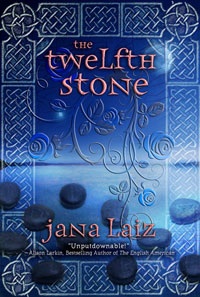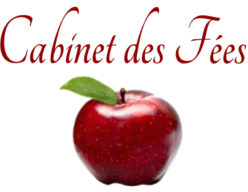The Twelfth Stone
by Jana Laiz
Crow Flies Press, 2011
Reviewed by Michelle Anjirbag
 The purpose of fairy tales, it can be argued, was to teach lessons to children and communities in order to help them to understand the world and assimilate to a society. Whether or not we agree with the lessons taught by older fairy tales and their interpretations is often up for debate. But it is truly something to read a fairy tale that teaches lessons appropriate for citizens of this century, while still allowing readers to delve into a world far beyond their own. In The Twelfth Stone, Jana Laiz does just that, bringing readers into Faerie only to have them emerge with a renewed love for the human realm.
The purpose of fairy tales, it can be argued, was to teach lessons to children and communities in order to help them to understand the world and assimilate to a society. Whether or not we agree with the lessons taught by older fairy tales and their interpretations is often up for debate. But it is truly something to read a fairy tale that teaches lessons appropriate for citizens of this century, while still allowing readers to delve into a world far beyond their own. In The Twelfth Stone, Jana Laiz does just that, bringing readers into Faerie only to have them emerge with a renewed love for the human realm.
Tam Lin adaptations are a rarity compared to the many reinterpretations of better-known tales such as “Beauty and the Beast” and “Cinderella”. While I love the tale, I haven’t been truly enthralled by a retelling since picking up An Earthly Knight by Janet McNaughton close to a decade ago. Laiz updates the Celtic tale, pairing the traditional romance with an important environmental subtext for younger readers, as well as the lesson that everyone can do their part to save the world that we live in. Additionally, by having the tale span not only Scotland and Faerie, but the U.S. also, Laiz creates a mythic connection to this continent that we as readers of fairy tales have been trained to associate most with Ireland and Scotland.
The true beauty of Laiz’s prose is that her message is not heavy-handed, but subtly woven through a captivating tale of family, love, friendship, and, of course, magic. Her main characters, fairy or human, are well-developed. Any reader can both sympathize with them and willingly step into their shoes for a while. But, for me, even better are Laiz’s monsters. We expect to find pieces of ourselves in our heroes and the supporting characters. We rarely look for ourselves in their foes. By giving each antagonist a’”dare I say’”human moment where we as readers can identify with their motivations for actions, Laiz makes her tale more than one of just good and evil. We see, and younger readers will see, that good and bad lies within each of us. It’s the choices we make that make the difference in the end.
